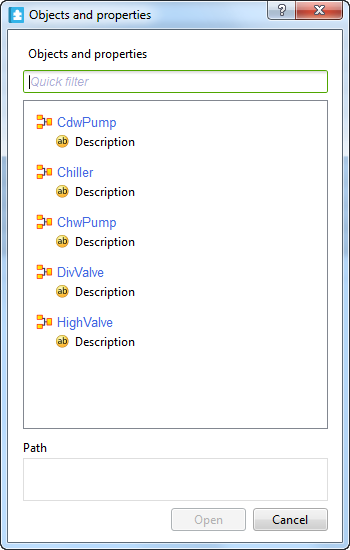Log on to rate and give feedback
1
2
3
4
5
Log on to rate
0

How to
Products:
Automation Server, AS-B, Enterprise Server, AS-P, WorkStation, Virtual Project Servers
Functionalities:
Basic Functionality
Product version:
1.8, 1.9
10/13/2016
Viewing Events from the Watch Pane
You can view events for properties selected in the Watch pane.
To view events from the Watch pane
In WorkStation, in the System Tree pane, select the object with the property whose events you want to view.
Drag the object containing the property to the Watch pane.
Select the property in the Watch pane.
Right-click the selection.
Point to View and then click Events .
action_zoom_plus_stroke 
In the Objects and properties list, select the property whose events you want to view.
Click Open .
The events of the property are displayed in an Events View in the WorkStation work area. If you are viewing the events for properties on a single object in the Watch pane, the events are displayed in an Event View without showing the objects and properties dialog box.
 How Events Work
How Events Work
 Objects and Properties Dialog Box
Objects and Properties Dialog Box